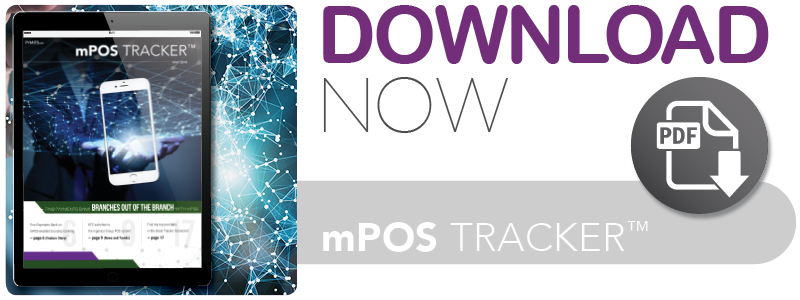Fino Payments Bank Branches Out Of The Branch With mPOS
In India, mobile banking alone doesn’t cut it — only 26 percent of people prefer banking apps to human agents. To serve app-wary customers, mPOS — or “bank in a box,” as Ashish Ahuja, EVP and head of products and alliances for Fino Payments Bank puts it — is key. In the latest mPOS tracker, Ahuja explains how Fino’s mPOS-equipped staff is bringing banking to customers’ doorsteps.
Banks in India are reaching beyond the physical walls of their operations to meet customers wherever they are.
Many are turning to mobile apps to bring their services to customers’ fingertips and remove the need for lengthy, often inconvenient trips to physical branches. However, only 36 percent of Indian mobile users are expected to have a smartphone in 2018. This means that many customers are left without access to such apps—and not all customers with smartphones want to use them. According to a 2017 survey, 26 percent of Indian consumers prefer using a mobile app over talking to a human bank agent, and another 49 percent do not use any online banking channels.
Organizations like India-based Fino Payments Bank are turning to mPOS solutions to extend digital conveniences to such groups. In a recent interview with PYMNTS, Ashish Ahuja, Fino’s executive vice president and head of products and alliances, explained that equipping representatives with mPOS devices enables them to bring banking services to customers’ doorsteps or to an authorized local merchant’s shop, while keeping the human touch.
While the bank offers physical branches, Fino’s focus is increasingly on providing services to customers at their homes through nearby merchants and via its mobile banking app.
“We believe that the customer service, the engagement of the customer, is going to happen outside the branch and not inside the branch,” Ahuja said. “We’re seeing more and more of our transactions happening at the doorstep of the customer.”
mPOS for Bankers
Each of Fino’s branches employs up to four customer relations officers, who visit customers at their homes and use mPOS devices to carry the bank’s capabilities with them. Fino also trains and equips local merchants with mPOS devices, enabling them to provide services to their customers on the bank’s behalf while maintaining their regular lines of business. The bank currently has a network of 422 branches and approximately 25,000 merchant or franchisee points across urban and rural areas.
Enabling these out-of-branch operations requires mPOS devices robust enough to bring the full range of the bank’s services.
“It is a device that’s like a bank in a box,” Ahuja said of the bank’s newest mPOS solution, which is being rolled out to its customer relations officers and 10,000 branch locations, merchant and franchisee points this year. “All the things that we do at our bank front? The same things have been [included] in a smaller device.”
That includes everything from opening an account and deposits to purchasing an insurance plan from the bank’s partners, Ahuja added.
Fino recently launched a new all-in-one mPOS solution to replace a system under which staff used multiple devices. The device supports authentication procedures to meet the bank’s needs — including a biometric scanner, PIN pad and card reader — and Fino chose to use an Android-based platform because of the operating system’s popularity in India.
The bank delivers services in-person at bank outlets, through staff or merchants equipped with mPOS devices and through its website or an app. The idea was to provide the same experience and offerings across various touchpoints, Ahuja said.
The Customer Access Lifecycle
Customers typically begin their banking relationships at a branch location, transition to using either branch or merchant locations, then ultimately transact independently with Fino through a smartphone.
“The majority of customers move from an assisted customer coming to an outlet of the bank or a franchisee outlet, to moving on to becoming a self-sufficient [one],” Ahuja said. “[There], he downloads the mobile banking application and does transactions.”
Fino is especially focused on building out its merchant network as it supports customers on their journeys toward app-based banking. It presently boasts approximately 422 branches, each tending to have 75 to 100 merchant points located within the surrounding 15-kilometer (three- to nine-mile) area. About 15,000 to 20,000 of those merchant points are located in urban areas.
Branches will remain a necessity, though, Ahuja said. The bank’s primary customer base earns about 100,000 to 600,000 rupees per year and is not yet digitally savvy. Many such customers may be wary of opening an account on a digital platform, and will still want to visit a physical bank to receive in-person assistance.
Ultimately, 75 to 90 percent of customers end up migrating to banking via app, and this group of customers also tends to have higher balances, according to Ahuja.
As customers move through the customer access lifecycle and become acquainted with Fino’s digital offerings, mPOS-based services that bring banking to their doorsteps — or a nearby merchant’s shop — will play a key role in helping them break out of the branch.

